

Giraffe

South African Giraffe (G.c. giraffa) — rounded or blotched spots, some with star-like extensions on a light tan background, running down to the hooves. Range: South Africa, Namibia, Botswana, Zimbabwe, Mozambique
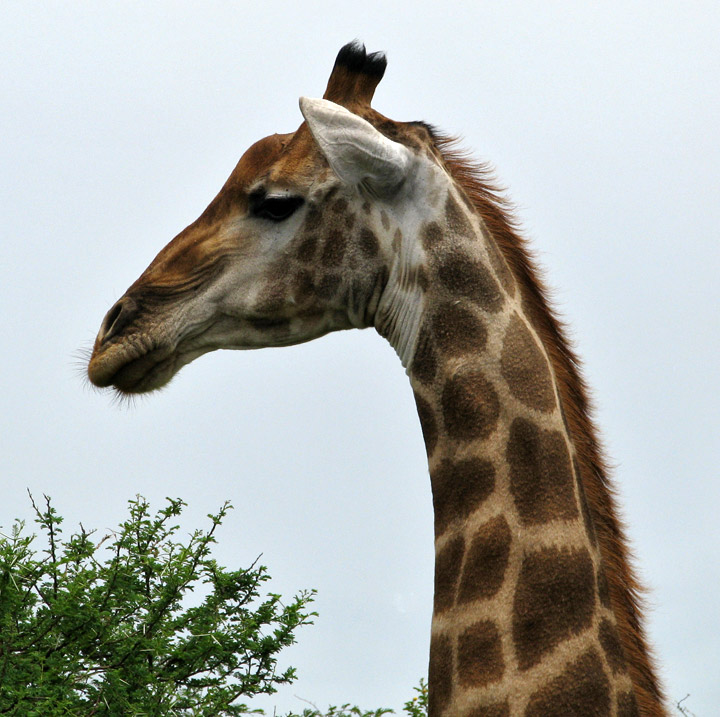
The giraffe (Giraffa camelopardalis) is an African even-toed ungulate mammal, the tallest of all land-living animal species. Males can be 4.8 to 5.5 metres (16 to 18 feet) tall and weigh up to 1,300 kilograms (3,000 pounds). The record-sized bull was 5.87 m (19.2 ft) tall and weighed approximately 2,000 kg (4,400 lb). Females are generally slightly shorter, and weigh less than the males do.

twisted to the right
The giraffe is related to deer and cattle, but is placed in a separate family, the Giraffidae, consisting only of the giraffe and its closest relative, the okapi. Its range extends from Chad to South Africa.
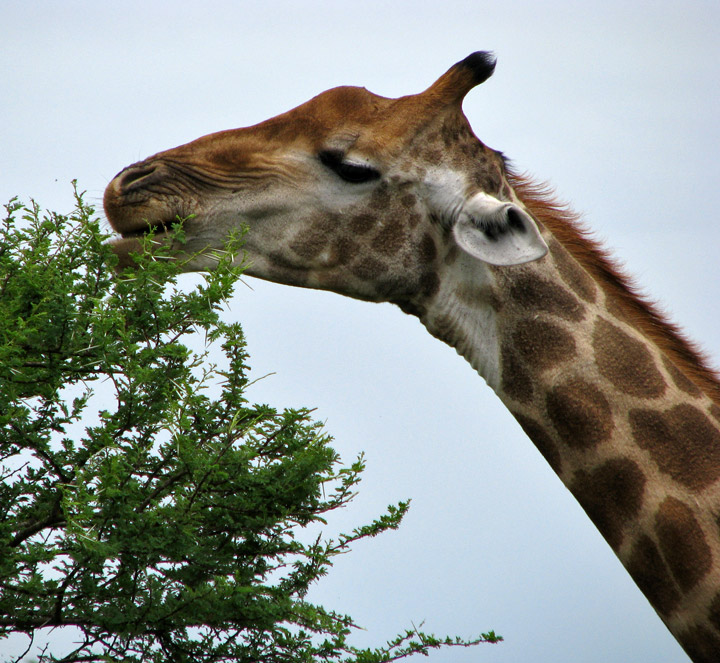
eating from the top of the tree
Giraffes can inhabit savannas, grasslands, or open woodlands. They prefer areas enriched with acacia growth. They drink large quantities of water and, as a result, they can spend long periods of time in dry, arid areas. When searching for more food they will venture into areas with denser foliage.
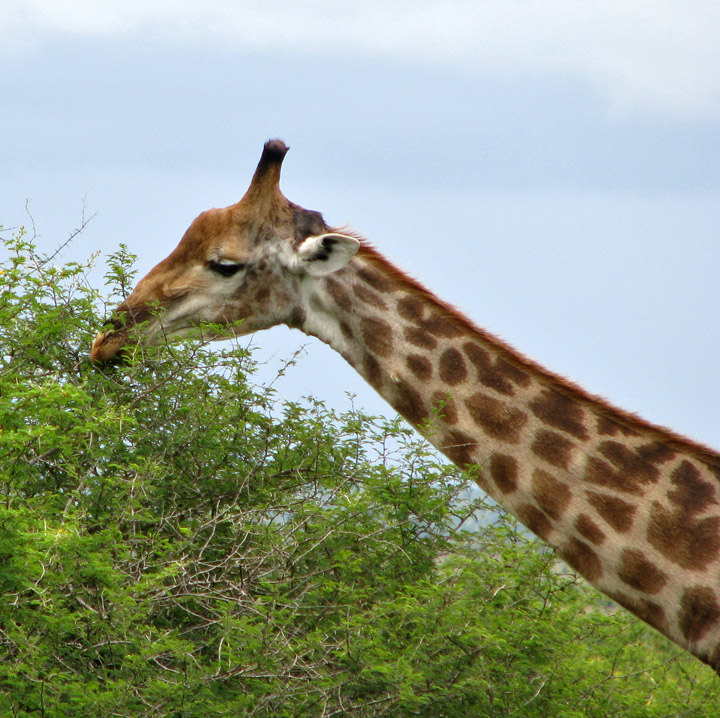
Male giraffes are around 4.5-5.5 m (16-19 ft) tall at the horn tips, and weigh 770-1900 kg (1700-4200 lb) Females are 30-60 cm (1-2 ft) shorter and weigh about 200 kg (400 lb) less than males. Giraffes have spots covering their entire bodies, except their underbellies, with each giraffe having a unique pattern of spots.

Both sexes have horns, although the horns of a female are smaller. The prominent
horns are formed from ossified cartilage and are called ossicones. The
appearance of horns is a reliable method of identifying the sex of giraffes,
with the females displaying tufts of hair on the top of the horns, where as
males' horns tend to be bald on top — an effect of necking in combat. Males
sometimes develop calcium deposits which form bumps on their skull as they age,
which can give the appearance of up to three further horns.
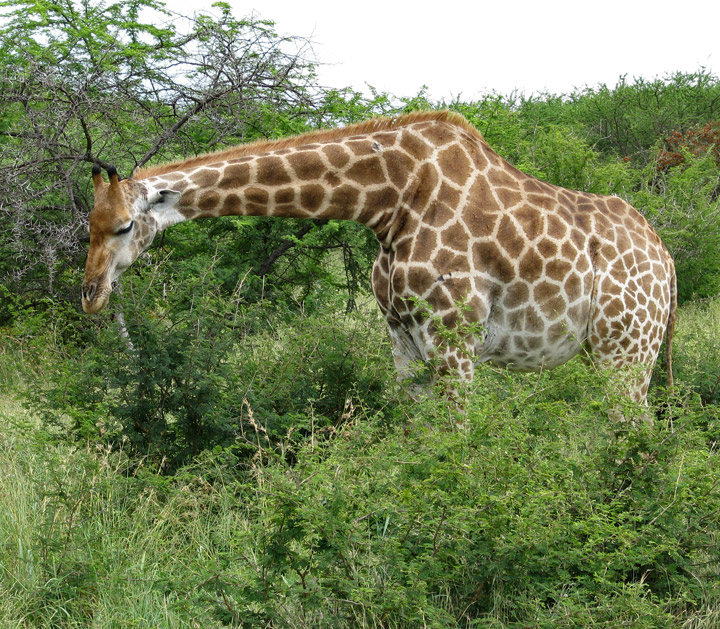
Giraffes have long necks, which they use to browse the leaves of trees. They
possess seven vertebrae in the neck (the usual number for a mammal) that are
elongated. The vertebrae are separated by highly flexible joints. The base of
the neck has spines which project upward and form a hump over the shoulders.
They have anchor muscles that hold the neck upright.
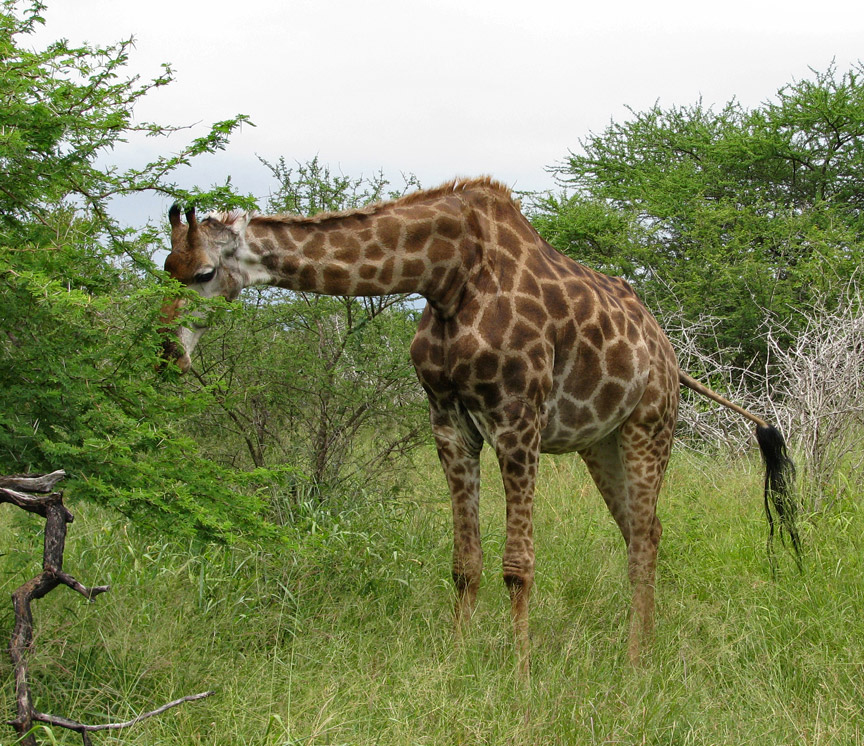
Giraffes also have slightly elongated forelegs, about 10% longer than their hind
legs. The pace of the giraffe is an amble, though when pursued it can run
extremely fast. It can not sustain a lengthy chase. Its leg length compels an
unusual gait with the left legs moving together followed by right (similar to
pacing) at low speed, and the back legs crossing outside the front at high
speed. When hunting adult giraffes, lions try to knock the lanky animal off its
feet and pull it down. Giraffes are difficult and dangerous prey though, and
when attacked the giraffe defends itself by kicking with great force. A single
well-placed kick from an adult giraffe can shatter a lion's skull or break its
spine. Lions are the only predators which pose a serious threat to an adult
giraffe.
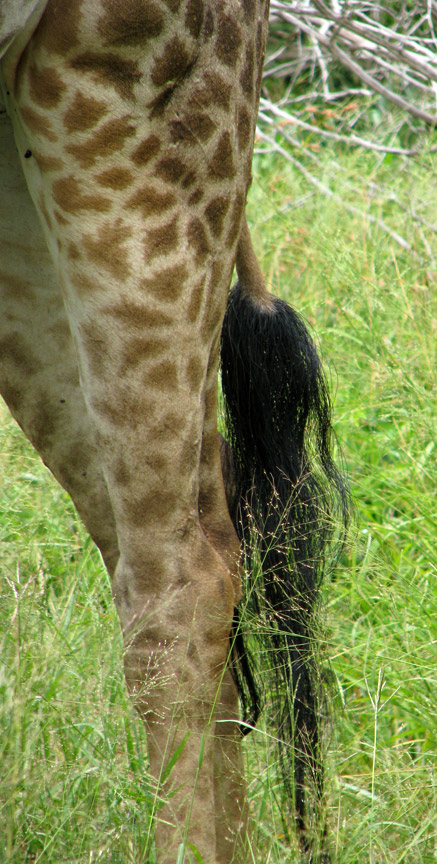
the tail
Modifications to the giraffe's structure have evolved, particularly to the circulatory system. A giraffe's heart, which can weigh up to 10 kg (22 lb) and measure about 60 cm (2 ft) long, has to generate around double the normal blood pressure for an average large mammal in order to maintain blood flow to the brain against gravity. In the upper neck, a complex pressure-regulation system called the rete mirabile prevents excess blood flow to the brain when the giraffe lowers its head to drink. Conversely, the blood vessels in the lower legs are under great pressure (because of the weight of fluid pressing down on them). In other animals such pressure would force the blood out through the capillary walls; giraffes, however, have a very tight sheath of thick skin over their lower limbs which maintains high extravascular pressure in exactly the same way as a pilot's g-suit.
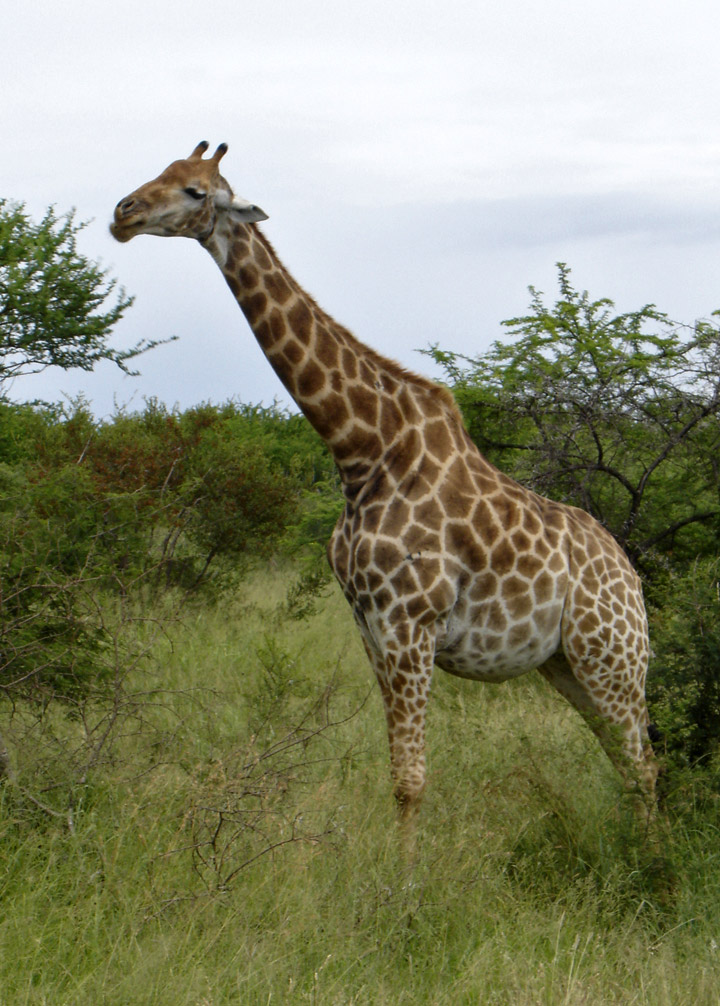
Female giraffes associate in groups of a dozen or so members, occasionally
including a few younger males. Males tend to live in "bachelor" herds, with
older males often leading solitary lives. Reproduction is polygamous, with a few
older males impregnating all the fertile females in a herd. Male giraffes
determine female fertility by tasting the female's urine in order to detect
estrus, in a multi-step process known as the flehmen response.
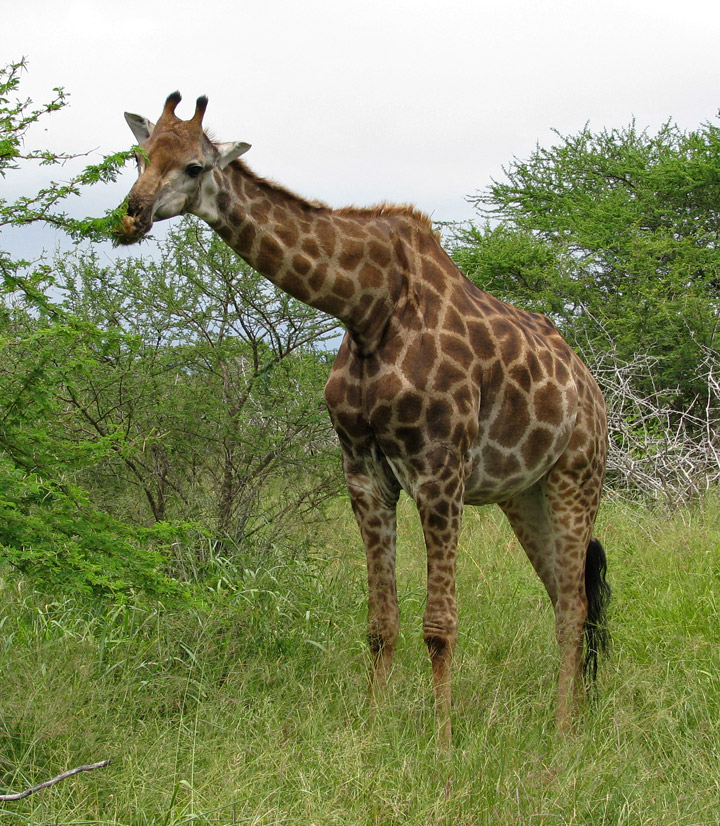
Giraffes will mingle with the other herbivores in the African bush. They are
beneficial to be around because of their height. A giraffe is tall enough to
have a much wider scope of an area and will watch out for predators.
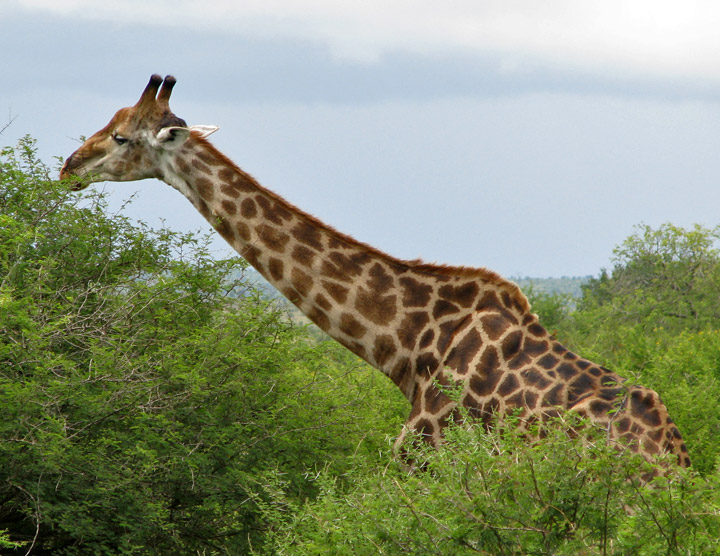
Giraffe gestation lasts between 14 and 15 months, after which a single calf is
born. The mother gives birth standing up and the embryonic sack usually bursts
when the baby falls to the ground. Newborn giraffes are about 1.8 m (6 ft) tall.
Within a few hours of being born, calves can run around and are
indistinguishable from a week-old calf; however, for the first two weeks, they
spend most of their time lying down, guarded by the mother. The young can fall
prey to lions, leopards, spotted hyenas, and wild dogs. It has been speculated
that their characteristic spotted pattern provides a certain degree of
camouflage. Only 25 to 50% of giraffe calves reach adulthood; the life
expectancy is between 20 and 25 years in the wild and 28 years in captivity
(Encyclopedia of Animals).
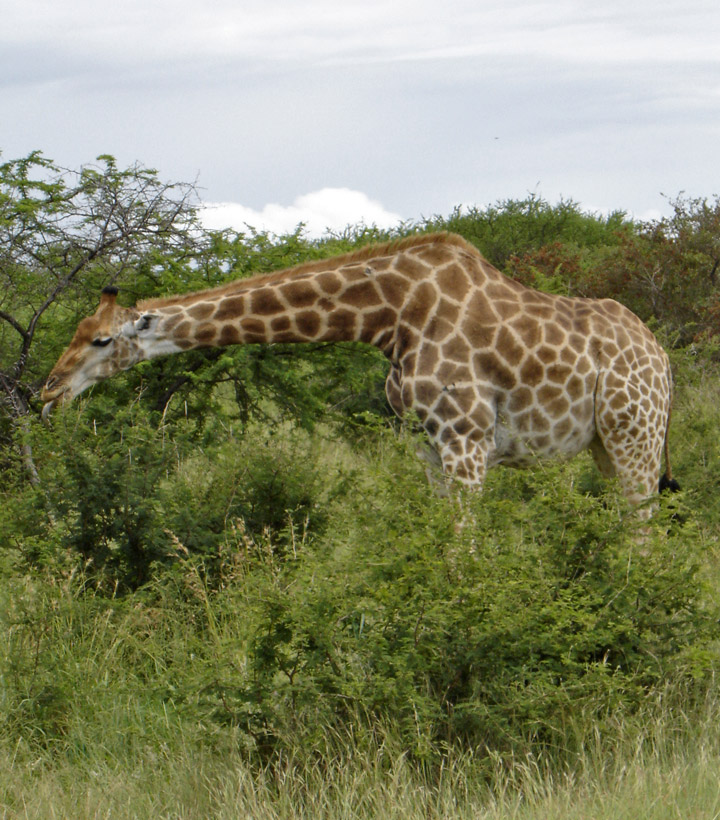
As noted above, males often engage in necking, which has been described as
having various functions. One of these is combat. Battles can be fatal, but are
more often less severe. The longer the neck, and the heavier the head at the end
of the neck, the greater the force a giraffe is able to deliver in a blow. It
has also been observed that males that are successful in necking have greater
access to estrous females, so the length of the neck may be a product of sexual
selection.
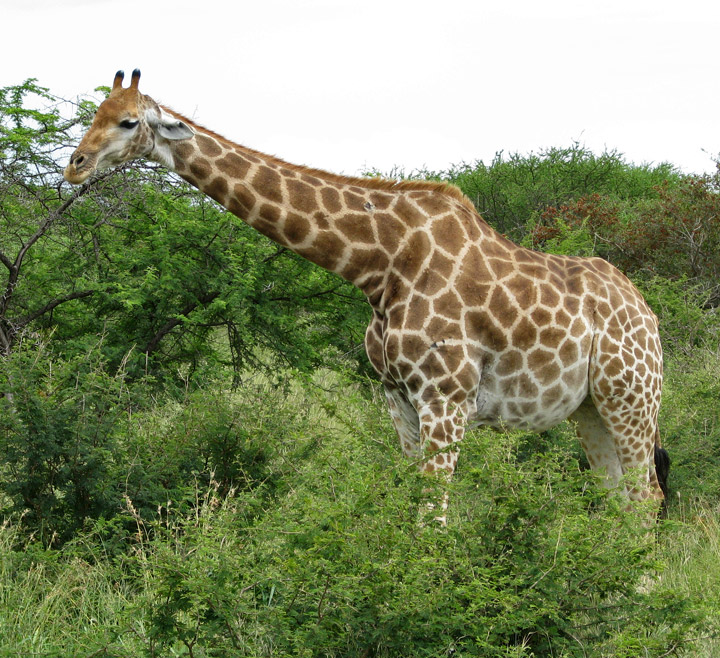
After a necking duel, a giraffe can land a powerful blow with his head —
occasionally knocking a male opponent to the ground. These fights rarely last
more than a few minutes or end in physical harm.
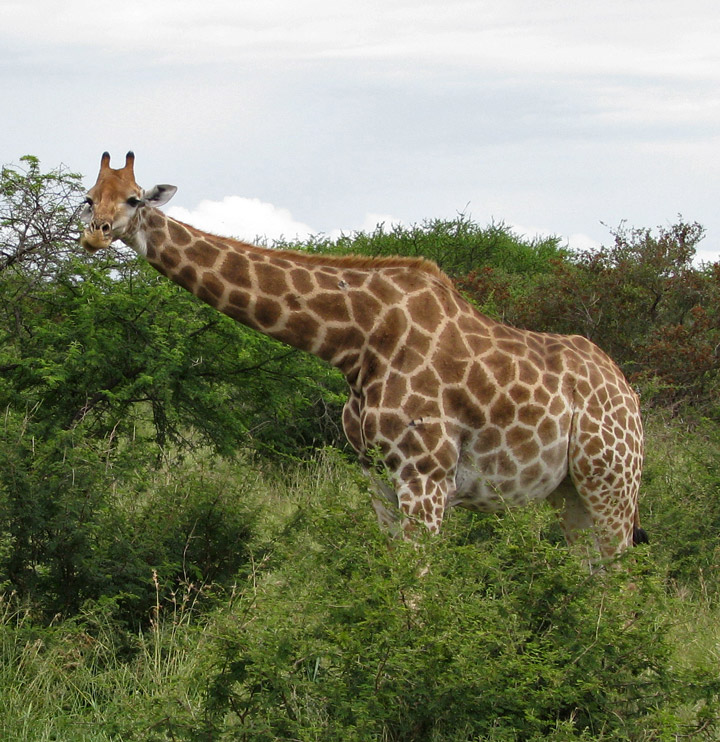
Another function of necking is affectionate and sexual, in which two males will
caress and court each other, leading up to mounting and climax. Same sex
relations are more frequent than heterosexual behavior. In one area 94% of
mounting incidents were of a homosexual nature. The proportion of same sex
courtships varies between 30 and 75%, and at any given time one in twenty males
will be engaged in affectionate necking behavior with another male. Females, on
the other hand, only appear to have same sex relations in 1% of mounting
incidents.
Text from Wikipedia